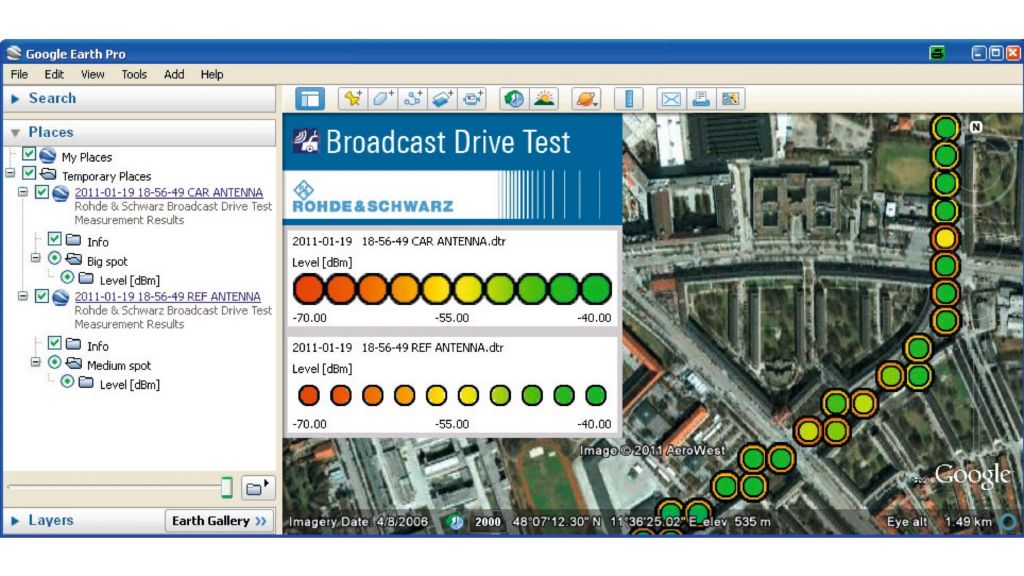Presentation of results
After a drive test, the measurement data is exported from the R&S®BCDRIVE broadcast drive test software and converted to KMZ format for display in Google Earth. Areas with poor reception are easy to recognize.
Comparing the receive levels of the reference antenna and the car antenna shows the cause of reception problems:
- If the level of the car antenna is poor and that of the reference antenna is strong, the problem is caused by the car antenna
- If both antennas have poor reception, the receive field strength is insufficient and the car antenna is working correctly
The R&S®BCDRIVE broadcast drive test software also provides measured data in CSV format for further processing with Excel or other programs.
Options for the R&S®ETL TV analyzer are available for the following broadcast standards: DVB-T, DVB-T2, ISDB-T, T-DMB, DTMB, ATSC and ATSC-M/H, and also DAB and VHF sound broadcasting. The R&S®ETC compact TV analyzer supports the DVB-T, DVB-T2 and ISDB-T standards. The application can therefore be used in most countries in the world.








